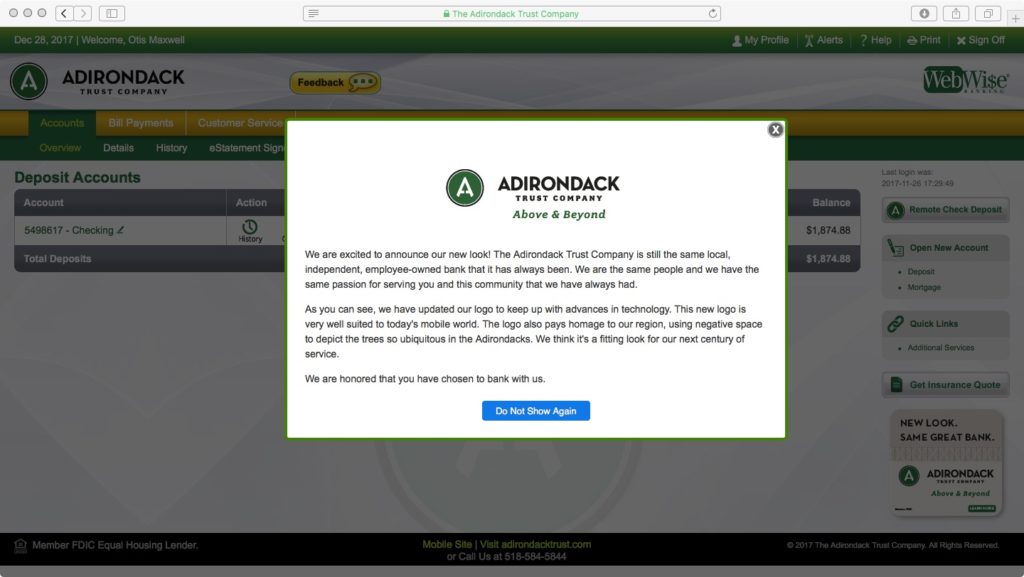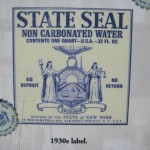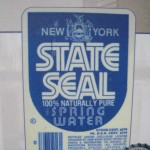
The bank in town recently changed its logo. They explain in the pop-up above, which appeared when checking my statement online, that they wanted to “keep up with advances in technology” and that the new logo is “very well suited to today’s mobile world” and then go on to explain the design strategy, much as the designer might have done when presenting to the client. How much do I, the customer, care about this stuff?
They’ve also got a new website that must seem complicated to use because there’s a statement at the top: “Welcome! Learn to use our new website–watch our tutorial video here.” When I click that link I get a warning that I am about to go to a third party website, which turns out to be Youtube. The video is a screen capture done with Camtasia, where we watch as they select from a drop down menu, access a contact form and such, all without any narration. Meanwhile the old website–which is called Webwise Banking–is still there and looks pretty much the same other than the logo change and doesn’t have any new functionality. Unlike most bank websites, it doesn’t present me with a table of recent activity. I have to counterintuitively click “history” to see any of that stuff.
The best thing about all of this is that their mobile sites, both adirondacktrust.com and webwisebanking.com, have been mobile-optimized; formerly webwisebanking (I never knew about the other site) returned a micro type version of their desktop. And their app, which formerly didn’t work for making mobile deposits, has been updated as well.
One wonders why Adirondack Trust thought it was necessary to put up a video tour of the site and why they didn’t imbed it on the page so they didn’t have that warning about the third party site. (This morning, by the way, the site is glitching and clicking the video link doesn’t do anything.) And why they continue to operate two sites, adirondacktrust.com and webwisebanking.com rather than redirecting the latter.
Think about Betty Crocker and Aunt Jemima and how those food product icons have evolved over the years. Do those companies make an announcement every time they update the art? Think about your favorite apps which are constantly updated behind the scenes. If you’re curious or bored you can look up a snippet about what’s changed, but often these are silly, suggesting the developers don’t think anybody will read them.
It’s fine to update your logo (the old Adirondack Trust logo was complex and not particularly attractive or bank-y) and a good thing to improve the user experience. But just do it, don’t harp on it to your customers. To do so is like wetting your pants while you’re wearing a dark suit. It gives you a nice warm feeling, and nobody will notice but you.



